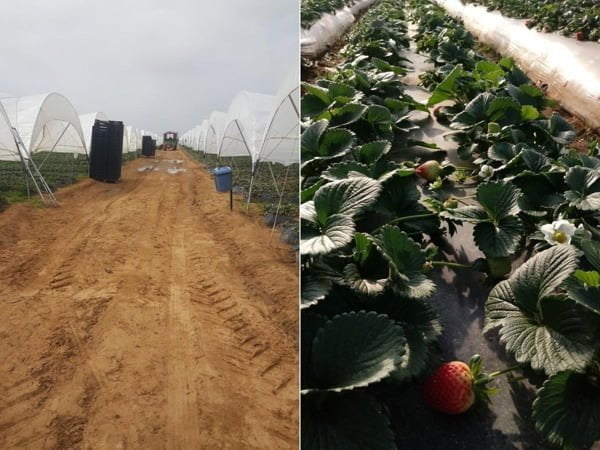Demand for Moroccan strawberries improved at the end of the year both on the local market and for export. Larache-based strawberry grower Oussama Baioua reports on the progress of the campaign.
Oussama told FreshPlaza, “The Moroccan campaign starts at the beginning of December, and it’s good timing to take advantage of the demand generated by the festive period. In the 4th week of harvest, demand was very good and we continue to export fair volumes in early January.”

“Demand for Moroccan strawberries comes from several European countries. As far as I’m concerned, I export in particular to the UK and France. The market is very dynamic and busy at the moment, and our customers are satisfied with the quality of our strawberries,” continues Oussama.
The grower expects the harvest and demand to peak in February. He adds, “Prices will then decrease, as large volumes are brought to market. Many varieties are available, of which the most produced are San Andreas, Fortuna, and Victory”.
Read also: Morocco is a successful example of diversification of fresh strawberry exports
The Larache / Moulay Bousselham axis, on the Atlantic coast in the north of the country, is considered the stronghold of red fruit production in Morocco. But growers in this region have decided to produce fewer strawberries this year in favor of other crops such as blueberries, after difficult strawberry campaigns recently. Oussama says, “Over the whole region, I estimate that strawberry acreage has decreased by almost 1000 ha approximately.”

The persistent drought affecting Morocco is beginning to be felt in Larache, located in the Loukkos region, which benefits from huge underground water reserves. Oussama says, “We’re suffering less from water shortage than the rest of the country, but we’re starting to worry with the persistent drought and lack of rainfall. Growers who rely on the supply of dams are already affected, although the cost of water has not increased. Those who have wells on their farms continue to work as normal. If rainfall doesn’t improve, producing in these conditions will be an adventure.”
The use of the site materials is free if there is a direct and open for search engines hyperlink to a specific publication of the East-Fruit.com website.




